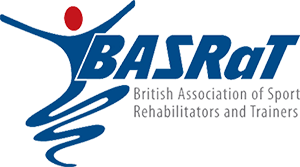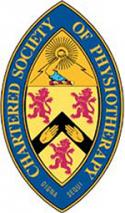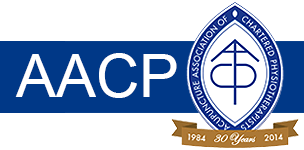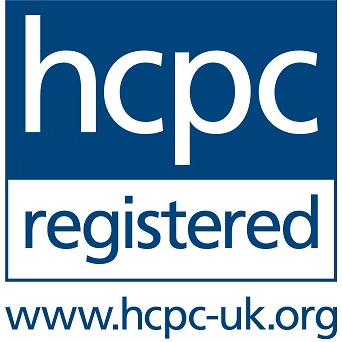Treatments
Mobilisations
Mobilisations of joints and soft tissues are techniques that are very useful in helping restore normal movement, an oscillatory force is graded and applied locally by a fully trained therapist. Mobilisations are graded by therapist accordingly and therefore can be applied at virtually any stage of the healing process to ensure good quality healing takes place. A low grade mobilisation helps to reduce pain and stimulate healing, higher grades help to break down unwanted scar tissue, promote nutrition and increase range of motion. Mobilisations can be applied with movement, this type of treatment is very effective as it encompasses activity within your muscles with a hands on technique to help return your movement back to ‘normal’.
Mobilisations increase movement at stiff joints and thus allow you to access better movement patterns, postures and simply feel looser.
Stretches
Muscles generally work together in pairs to help promote good quality pain free movement at a joint, if you over use certain muscles due to repetitive strain, sport, prolonged postures or weakness in other parts of your body then you can develop tightness and dominance within one of the pair, If this continues it can cause stress and altered loading to the soft tissues which may cause you to develop pain, tendinopathies, ligament sprains, muscle spasms, and the list is endless. A qualified physiotherapist will help assess you for any muscle imbalances to include tightness and weakness of the soft tissues. Effective methods of treating such problems will be outlined in forms of things you can do to help yourself and techniques we can perform within our treatment to help.
Stretching is a technique used to increase the length of muscles and tendons in order to improve the effectiveness of the muscle fibres, improve joint range of motion and relieve pain. Your Physiotherapist will advise appropriate stretches in order to correct muscle length and elasticity.
Muscle energy techniques or Proprioceptive Neuromuscular Facilitation stretches are used to lengthen muscles through a hold and relax muscle contraction technique, this generally requires the assistance of your therapist and is widely used by athletes to improve range of movement in a joint both before and after sport to improve performance and reduce risk of injury.
Manipulations
A manipulation is a technique that can be applied to patients whose condition is not easily irritated, if there is local muscle guarding then this must be addressed first. Manipulations are quicker techniques performed at the end of the joints range of motion, this helps to break down scar tissue and release pressure within the joint which sometimes causes this technique to make a ‘crack’ known as a cavitation. Manipulations can demonstrate immediate improvements in the range and quality of movement for the right category of patient, your Physiotherapist will assess your suitability for these techniques and ensure you are fully aware of what to expect.
Most commonly spinal joints are those that we may choose to treat with manipulation, although these treatment techniques can be used with other joints.
Ultrasound
Ultrasound is a small electrical device used to send high frequency sound waves into your problem tissues. The sound waves penetrate the tissue and stimulate the cells involved in healing to reduce inflammation and promote tissue repair. Ultrasound can be applied at any stage of healing, your therapist will alter the dose according to your injury and phase of healing. Ultrasound treatment helps you to recover after acute injury, and may speed up recovery times. Ultrasound at a high dose is also helpful in the management of calcific tendinopathies to help break down and aid reabsorption of the calcium ions within the tendon.
Taping
Physiotherapists can use taping in order to relieve pain, improve joint stability, offload joints, prevent injury, reduce injury reoccurrence, improve muscle function and restore normal movement. We use a variety of tapes from zinc oxide for joint stability, to Elastic Adhesive Bandage (EAB) to compress swelling. Over recent years Kinesiology tape (K-tape) has become very popular. This comes in a variety of colours and is unique in the fact it allows full multidirectional movement- but keeps the brain vital feedback on where that particular body part is in relation to the desired movement and movement pattern.
Massage
Massage is a soft tissue technique with direct influence on the muscles, tendons, ligaments and other connective tissue. Massage has a number of physiological benefits including increasing; circulation and oxygen flow, reducing inflammation and releasing endorphins. Massage aims to alleviate aches and pains by relaxing muscles, improving joint range and flexibility and ultimately speeding up recovery time.
Myofascial release
Myofascial release is a specialised physical and manual therapy used in the treatment of this form of superficial connective soft tissue. The treatment method involves the application of soft, yet firm, continuous pressure into the area of tension. The treatment aims to reduce discomfort and restore normal tissue movement by causing an increased blood flow and the fascia to elongate. Myofascial release is another fantastic tool we have to help manage conditions caused by restrictions within tight structures within the kinetic chain, myofascial release is helpful in the management of many muskuloskeletal conditions, to name a few, we may use this type of technique to help our patients that suffer with plantar fasciitis, greater trochanteric pain syndromes, snapping hip, carpal tunnel syndromes, and low back pain.
Acupuncture
Acupuncture was developed in China over 5000 years ago to help with pain and illness. Western acupuncture is used primarily to treat pain. The theory is based on the flow of energy through the body called Qi. The Chinese believed that this Qi should be balanced and any problems with the flow of energy would lead to illness. The principle of acupuncture is based on specific points over the body which are located in merridans. By using fine needles these points can be stimulated to improve the balance of Qi and improve pain. Scientific research has shown positive effects in the brain and natural release of endorphins which aid in pain relief. Acupuncture can be used in variety of conditions including Back pain, Osteoarthritis, Neck pain, Shoulder pain, Tendonapathy and headaches.
Interferential
An interferential machine produces an electrical current which passes to the affected area. The therapist will place a few electrodes on your affected area, in order to get the two currents to pass across each other. You may feel a mild tingling sensation on contact with the skin. Interferential is used to increase local blood flow, stimulate nerve cells and muscle contraction. These effects help to reduce swelling, assist healing, reduce pain, stimulate release of endorphins and prevent muscle inhibition.
Home Exercises
Your physiotherapist will fully assess your problem area to help you discover exercises to address the cause of your symptoms or to compliment manual therapy administered. Research shows that home exercises targeted to strengthen, stretch, load tissue or improve motor control are essential in your recovery and management of long term conditions. When combined with therapeutic intervention, progressed accordingly, in line with your personal goals and current regime you will experience less pain, increased function and potentially improved performance.
Pilates
Pilates is a form of exercise created by Joseph Pilates in the 1800's. It is a technique that focuses the mind on the significance of the deep muscles in and around the trunk, which ultimately dictate how stable the core is. Pilates is based on the main principles of breathing, concentration, control, centering, precision, flow, integrated isolation and routine. Exercise routines are structure to increase both the strength of one’s core muscles but also the muscles ability to hold that position for sustained periods. This consequently can facilitate an increase in controlled flexibility as well an increased awareness of body position and posture in activities of daily living, work and sport.













